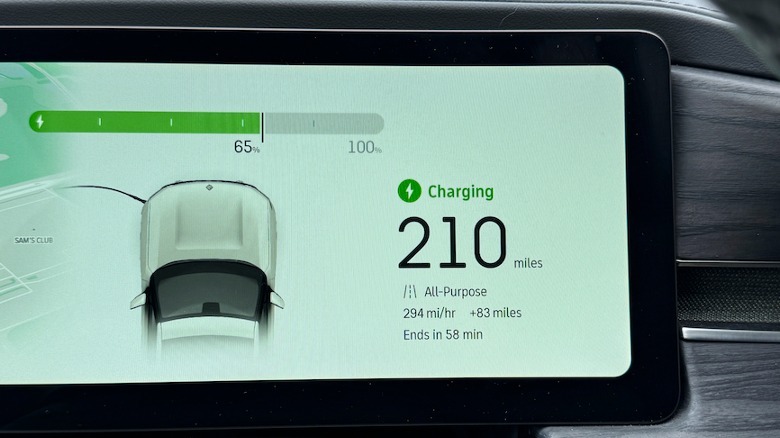With a Level 2 home charger, expect 16-25 miles of range per hour depending on amperage. The R1T also supports up to 220 kW DC fast charging, but cold conditions demonstrated temperature’s hefty impact on speed. In theory, a fast charger — currently using the CCS connector, though Tesla Supercharger access is coming – could add 140 miles of range in about 20 minutes.
In practice, after a slow start, I saw a 188 kW peak at a 350 kW Electrify America station. After 24 minutes, 54 kWh had been delivered, taking the R1T to 75% charge. A second session, which hit a 150 kW peak, took 32 minutes to deliver 47 kWh and take the R1T to 80%. That’s an average of 1.8 kWh per minute or about half the R1T’s theoretical maximum.
Battery warming starts when a fast charger is selected in the navigation system (you can’t manually begin that process, currently, if you’re headed for a charger not in Rivian’s database), the idea being that, by the time you plug in, it’ll be in its 68-77 Fahrenheit peak efficiency range. Had preconditioning been running twice as long as the 15 minutes it took to drive to the Electrify America station, there’s a much stronger chance that I’d have seen faster speeds on first plugging in.
There’s also the charging curve to consider: EV batteries charge faster until they get to around 80%, at which point the rates slow dramatically so as to prevent potential damage. It wouldn’t be unfair to blame commonplace infrastructure issues too. The R1T will flash up a message if the station it’s plugged into is the cause of slow speeds, but more transparency about possible reasons for a sluggish charge would be welcome reassurance.


